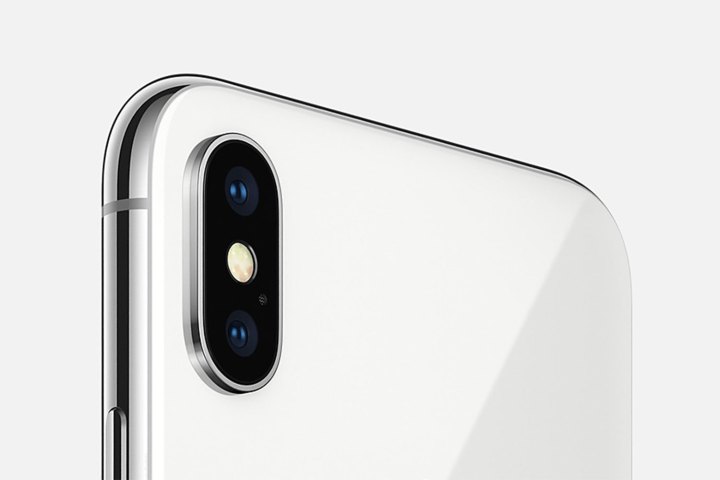
What is HEIF?
HEIF stands for High Efficiency Image Format. Like JPEG, GIF, TIFF, and PNG, HEIF is a type of image format put forth by the Moving Picture Experts Group (MPEG). While much of the current discussion regarding HEIF is centered around Apple’s upcoming iOS 11 and MacOS High Sierra operating systems, the format was finalized in 2015 and is not exclusive to Apple.
What does it do?
Like JPEG, HEIF is a standard for lossy digital image compression. It’s a technology for maintaining some quality while keeping file sizes small; compared to a lossless technology like TIFF, which employs little to no compression but file sizes are very large. HEIF, according to Apple, maintains the image quality of JPEG but at up to half the size, or offers better quality at the same size. It achieves this by comparing all the data of an image and only saving the areas that are different, instead of every piece of information (it’s more technical than that).
Why is there a need for a new standard?
JPEG has been the universal standard since it was created in 1992, and is used by nearly everything that involves digital photography. But JPEG file sizes are getting larger, thanks to constant improvements in camera tech and new features, like new sensors with more megapixels, which affects storage capacity as well as bandwidth limitations. Apple’s adoption of HEIF is one way to deal with increasing file sizes without sacrificing image quality or needing to dedicate significant storage.
Why are we only hearing about HEIF now?
It’s simply because Apple is using it, and that carries a lot of weight for any emerging technology. The company announced support for HEIF at WWDC 2017, but it remains to be seen whether Apple will promote it publicly or keep it as behind-the-scenes tech.
Is JPEG dead?
Not at all. Because HEIF is still new, it’s not universally supported, even if Apple is using it. In fact, iOS 11 will still support JPEG. In the camera settings, users can choose between High Efficiency and Most Compatible, the latter being JPEG (iOS 11 will also convert an HEIF file to JPEG when it’s required, but not all hardware and software can read an HEIF file natively). That means you’ll still need JPEG for editing and sharing with incompatible apps. Also, older JPEG files you have on your phone will remain in that format, even after you upgrade to iOS 11.
However, compatibility might not be an issue since Apple software developers have had some time to build support for HEIF into their apps — if developers join the bandwagon, naturally. Google Photos, it seems, is supporting the format in some fashion, based on a recent test we did.

Let’s not forget that JPEG has been around more than two decades. HEIF, if it picks up steam, will live side by side with JPEG, PNG, GIF, TIFF, and all the other formats in existence.
Lastly, HEIF is more than just a new file format. As CNET’s Stephen Shankland best puts it, it’s a container for different types of files. That means, in addition to a still photo, a HEIF file could also be an animated GIF, HDR photo, burst, Live Photo, short video, etc., as well as the depth-sensing data for augmented reality.
So, is the industry moving to HEIF?
Not quite. While Apple is surely using its clout to push things in that direction, the industry hasn’t embraced it yet. As mentioned, it’s not universally supported, and Apple hasn’t abandoned JPEG completely. And, there are other formats in the works, such as Google’s WebP.
There’s also an issue of licensing. Yes, to use the format a company has to pay for it, in addition to building code to support it. That might not be an issue if the benefits outweigh the cost, but companies may not rush to do so, either.
What about HEVC? What’s that?
HEVC, or High Efficiency Video Coding, is the compression standard Apple is adopting for video, along with HEIF for photos. Also known as H.265, the reason for the switch from the current standard, H.264 (or MPEG-4), is the same as the change from JPEG to HEIF. Since new iPhones now shoot up to 4K resolution, video file sizes have increased significantly. That affects not only storage and transfer speeds, but also bandwidth for streaming video. HEVC helps to maintain that high resolution by delivering clearer image quality with fewer artifacts, while keeping the file sizes manageable. Apple already uses HEVC for FaceTime, and the industry is adopting the codec to overcome the limitations of H.264. You can read more about HEVC and how it’s redefining video encoding.
If you want to get geeky, Apple’s Developer website offers more information on how HEIF and HEVC work, and how to build support for it. For everything else about iOS 11, you can read all about the new improvements here.
Editors' Recommendations
- A big iPhone update is right around the corner
- An Apple insider just revealed how iOS 18’s AI features will work
- There’s a big problem with the iPhone’s Photos app
- The 7 biggest features we expect to see in iOS 18
- This could be our first look at iOS 18’s huge redesign



